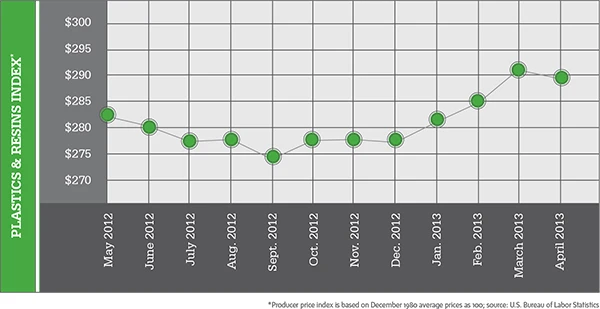
The effects of China’s “Operation Green Fence” are being felt by U.S. plastics recyclers. Pricing for some secondary plastics has softened since China began cracking down on imports of secondary materials in February. The campaign, which is slated to run through November, is designed to “strengthen the supervision” of environmental standards, according to Wang Jiwei, vice president and secretary general of the China Nonferrous Metals Industry Association Recycling Metal Branch (CMRA), who spoke at the Institute of Scrap Recycling Industries Inc. (ISRI) 2013 Conference and Exposition.
Wang said the initiative does not involve new regulations but “strengthens Article 12,” which was issued in April 2011. (That article states, “In the process of importing solid waste, measures shall be taken to prevent it from spread[ing] seepage and leakage or other measures to prevent pollution of [the] environment.”)
A reprocessor based in the Midwest says the Green Fence initiative is “slowing or stopping many materials” from flowing overseas to China.
“China is also putting in more duties,” he adds. These two initiatives are forcing prices downward in the export and domestic markets, the reprocessor says.
The decrease in pricing is being seen across all grades of plastics, however the Midwest-based reprocessor says the decline is seen most acutely among commodity-grade plastics, such as polyethylene terephthalate (PET) and high-density polyethylene (HDPE).
Further affecting the flow of material to China has been a strike by dockworkers at the Hong Kong Port that began March 28. The strike was settled 40 days later, when dockworkers voted to accept a 9.8 percent wage increase, according to press reports. During the strike, however, shipments en route to Hong Kong had to be rerouted, which effectively lowered the price of the plastic scrap in transit, the reprocessor based in the Midwest says.
A reprocessor based in the Gulf Coast region describes markets as “murky,” adding that orders are down. She says shippers are even weary of sending clean postindustrial material to China for fear that the smallest amount of contamination could result in considerable trouble and expense for the shipper.

She describes domestic scrap generation as steady and adds that more material is remaining in the market because of the issues associated with shipping material to China.
However, the reprocessor based in the Gulf Coast says domestic demand appears somewhat softer than typical for this time of year. She adds that while buyers are purchasing the same amount of material over time, they are not committing to those volumes at once, hoping for a potential price decrease over time as the effects of Operation Green Fence continue to unfold.
“People are concerned that they will be able to buy material more cheaply a week or two from now and will only buy what they need,” a reprocessor and broker based on the West Coast says. “They are buying only what they need when they need it.”
“All commodities are piling up, and prices are coming down,” he adds.

Explore the June 2013 Issue
Check out more from this issue and find your next story to read.
Latest from Recycling Today
- Aqua Metals secures $1.5M loan, reports operational strides
- AF&PA urges veto of NY bill
- Aluminum Association includes recycling among 2025 policy priorities
- AISI applauds waterways spending bill
- Lux Research questions hydrogen’s transportation role
- Sonoco selling thermoformed, flexible packaging business to Toppan for $1.8B
- ReMA offers Superfund informational reports
- Hyster-Yale commits to US production





